K-Pop?
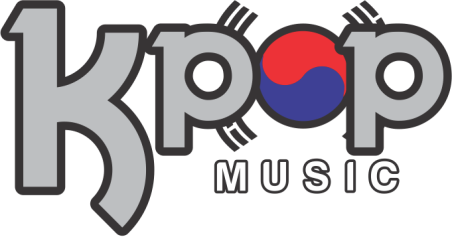
K-Pop is not something I have ever been interested in, nor is it something I have been exposed to in my life. Because of this, I thought it would be fun to look into it a bit more.
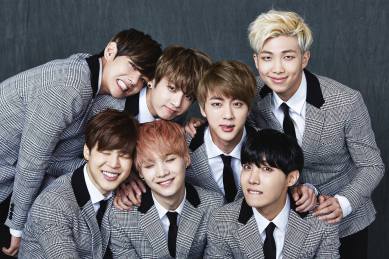
So, what is K-Pop? I’m sure a lot of people already know but K-Pop is an abbreviation for Korean popular music. The genre consists of electronic, hip-hop, pop, rock and R&B music, originating in South Korea (Kpop For Beginners, 2019).
While originally only popular amongst teens and young adults across Asia, thanks to the internet people all over the world can now enjoy the music and fashion and style of Korean idol groups and singers.
History of K-Pop
K-Pop dates all the way back to 1885 when Henry Appenzeller would teach American and British songs to school kids, translating the lyrics into Korean. These songs, known as changga, were banned during Japan’s rule over Korea from 1910 to 1945 as they denounced Korea’s colonial oppressors (Mersereau, 2017).
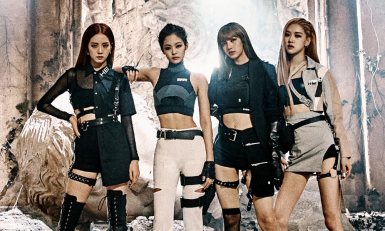
In 1945 Korea met the Western culture with American popular music, being introduced by the U.S troops that stayed after the Korean War ended. During the era the first Korean pop stars appeared including The Kim Sisters in 1959. Other notable K-Pop singers include Seo Taiji & Boys in 1992 and H.O.T. in 1996 (Mersereau, 2017) .
Seo Taiji & Boys were the breakout group that inspired K-Pop. They wore baggy pants, rapped and danced, something that was very different to the music that Korean’s were used to. This began the rise of the K-Pop we know today, it’s an idea rather than a genre (Explained: K-Pop, 2018).
The current K-Pop landscape in dominated by pop groups that emerge under the training, management and total control of the record labels. These are known as ‘slave contracts’ as they are one sided and long running with only a small percentage of the total earnings going to the artist (Mersereau, 2017).
My cultural background is Italian and Australian. I am never exposed to music that is outside of these cultures. The music I listen to is heavily influenced by my friends, who are mainly into current and popular music. I have no favourite genre but can say that I don’t like heavy metal. I don’t listen to much music outside of Western countries so K-Pop is very different for me. Keep this in mind as you watch me watch K-Pop. I decided to look into some of the more popular current K-Pop artists, BTS and Black Pink.
References
Explained: K-Pop. (2018). Directed by E. Klein and J. Posner. United States: Vox.
Kpop For Beginners. (2019). What is Kpop?. 28 Oct 2019. https://kpopforbeginners.weebly.com/what-is-kpop.html
Mersereau, J. (2017). A brief history of K-Pop | A.Side. A.Side. 28 Oct 2019. https://ontheaside.com/music/a-brief-history-of-k-pop/
More on my Autoethnographic Experience
The experience I talked about in my previous blog post is from the perspective of a very westernised Australian who has an Italian influence due to cultural background. Not only is my cultural background very different, my work life, university life and friendships have also shaped my life experiences. These aspects of my culture have contributed to shaping my experience in the Japanese restaurant and my perceptions of the Japanese culture from this experience.
Ellis et al (2011) states that stories enable us to make sense of ourselves and others. It is a way for us to understand our feelings and emotions and why we felt the way we felt. This experience has allowed me to understand the Japanese culture a bit more, not only through the food, but through the other aspects of the restaurant, such as the atmosphere and waiters. During my visit, I began to understand that my heavily westernised culture shielded me from fully experiencing this part of Japanese culture.
Furthermore, this relates to a concept within autoethnography called reflexivity. According to Wall (2006), reflexivity refers to the point in which ‘the researcher pauses for a moment to think about how his or her presence, standpoint, or characteristics might have influenced the outcome of the research process.’ I realise now that even something as small as ordering food was influenced by my culture. I walked into the restaurant ready to try all different kinds of food but when my friends and I ordered we stuck to the popular dishes or ones that I had tried before. I didn’t eat anything with raw fish because I don’t like raw fish and I didn’t try Ramen because my friend convinced me that I didn’t like it. These huge parts of my culture influenced the outcome of this experience. Additionally, the dishes we deemed popular were decided by western popular culture and a discussion with my friends and family and what they thought of as a popular Japanese dish.
Finally, within ethnography, writing is considered a method of inquiry. Wall (2006) suggests that ‘writing is a way of knowing – a method of discovery and analysis,’ and that by writing in different ways, we can discover new aspects of our topic and our relationship to it. I am not able to distinctively remember the details of my experience but being able to write about it in the form of a narrative has allowed me to relive my experience and reflect. Through this exercise I have learnt that there were limitations to my experience brought on by my own self and my unwillingness to be open to new experiences. However, I was able to involve myself enough in the Japanese culture in the restaurant to learn something new about the culture and myself.
Autoethnography allows the researcher to reflect on their experience and how certain aspects of themselves and their cultural framework influence their experiences. Through this reflection, I have noticed that certain aspects of my life, such as my culture and friendships, have a heavy influence on the decisions I make and how I take to new experiences.
Reference List
Wall, S. (2006). An Autoethnography on Learning About Autoethnography. International Journal of Qualitative Methods, 5(2), pp.146-160.
Ellis, C., Adams, T.E., and Bochner, A.P. (2011) ‘Autoethnography: An Overview,‘ Forum: Qualitative Social Research, 12:1.
Available at: http://www.qualitative-research.net/index.php/fqs/article/view/1589/3095
My Autoethnographic Experience
Asian culture happens to be the culture that I have been least exposed to in my life. However, there has been one particular experience I have had with the Asian culture that I want to talk about. I have never been to an Asian country, in fact, my first trip to an Asian culture will come in January 2020 with a girl’s trip to Japan. Being the westernised kids that we are, we were concerned with the food aspect of the trip, as we have never really eaten authentic Japanese food before, so we decided to visit a traditional Japanese restaurant to prepare for our trip.

The atmosphere in the restaurant was calming and the waiters were all really polite and helpful. They made us feel very welcome. The restaurant made it seem like you were stepping into Japan with the colours and atmosphere being such a prominent part of the restaurant. I’ve heard that in Japan and some Japanese restaurants here in Australia, you order off an iPad and don’t really interact with the waiters. There were no iPads but the interaction with the waiters was minimal. Instead of them taking our order, we were given a menu and a pen and just had to mark next to each dish we wanted, and how many we wanted.
The food was very fast in coming out. We had pork buns, dumplings, fried chicken, noodles and rice. I’m not going to lie, the chicken was pink and looked very undercooked and unappealing but it tasted great. The dumplings also tasted amazing, we ended up ordering more. What I didn’t like was the pork buns and noodles. I’ve heard that disliking pork buns is an uncommon trend but they just weren’t appealing to me. The noodles were also not great to me but my friend loved them. We got some that came in a type of soup, and others that were on their own.
Every time the waiter came out he was very friendly and accommodating to the fact that none of us could use chopsticks, trying to teach us how to use them. The fact that a lot of the workers didn’t speak English that well, we had no troubles communicating with them. Overall, this experience was something that I would definitely do again. I am excited to try more Japanese food as part of the group assessment for Digital Asia. We are going to a different restaurant so I am curious to see what’s different and what’s the same.
Autoethnography and Akira
Akira is a 1988 drama/thriller where a ‘secret military project endangers Neo-Tokyo when it turns a biker gang member into a rampaging psychic psychopath who can only be stopped by two teenagers and a group of psychics’ (IMDB).
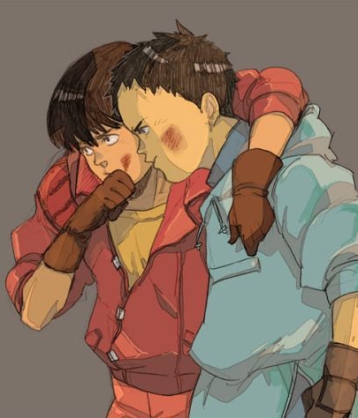
I wasn’t looking forward to this film as it isn’t something I would normally watch, however I actually found it kind of interesting. As part of my research for live tweeting, I came to learn that there is continuous talk of turning this film into a live action, showing just how timeless and popular this film is.
The standout part of the film for me was the brother-like dynamic between Kaneda and Tetsuo. I found it interesting that this dynamic, in my opinion, eventually leads to the need for power for Tetsuo. Where Kaneda is always looking after him, he finally feels the need to break away and take more control for himself, showing Kaneda that he can look s need Kaneda. On a much smaller scale I would call this an argument between siblings.
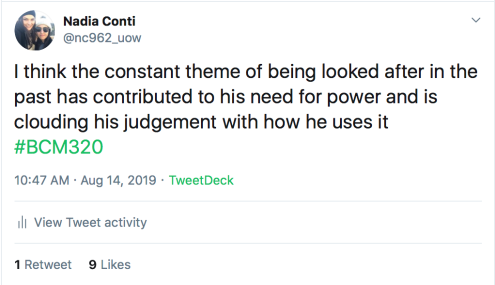
Autoethnography is not a term I had heard of before taking Digital Asia this semester so I was very confused as to what this meant. After week one, my understanding of this term is; taking cultural background and personal experience and using them to influence research. According to Ellis et al (2011) ‘Autoethnography is an approach to research and writing that seeks to describe and systematically analyze (graphy) personal experience (auto) in order to understand cultural experience (ethno).’
After researching this topic, I have found that a major part of autoethnography is being able to understand your own feelings, reactions and motives and how these influence what you think or do in certain situations. This is called reflexivity. Anderson (2006) defines reflexivity as ‘the researchers’ awareness of their necessary connection to the research situation and hence their effects upon it.’ For reflexivity to happen, there must be a connection between ethnographers and their settings as it entails a desire to better understand both themselves and others through examining actions and perceptions (Anderson, 2006). As ethnography involves personal experience, good reflexivity is important for ethnographers.
So far, my understanding of ethnography is limited to what is written above, however as we explore this concept in more depth throughout the semester and in the digital artefacts, my understanding will grow.
Reference List
Anderson, L. (2006) Analytic Autoethnography, Journal of Contemporary Ethnography, Vol. 35, No. 4, pp. 373-393.
Ellis, C., Adams, T.E., and Bochner, A.P. (2011) ‘Autoethnography: An Overview‘, Forum: Qualitative Social Research, 12:1. Available at: http://www.qualitative-research.net/index.php/fqs/article/view/1589/3095
The Host (2006)
And we’re back for another session of live tweeting!
This is not the first time I’ve experienced live tweeting, so going into this seminar I knew what to expect and was prepared to share my opinions and engage with others.
In the seminar, we screened The Host, described as ‘horror thriller, a political satire, a dysfunctional family comedy, and a touching melodrama’ (Emerson, 2007).
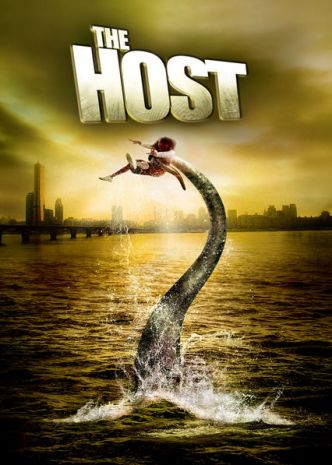
This is not usually the type of movie that I would watch, so I was both excited and doubtful. By the end, I was surprised by how much I actually enjoyed it. Culture would have played a huge part in this outcome as well as the direction of my live tweeting and how I engaged with other viewers in the Twittersphere.
Now my obvious cultural characteristics would be an Australian student with a heavy Italian background but this isn’t the only type of culture that would have influenced how I perceived this movie. Part of my culture would include the importance of family relationships and friendships and the emphasis placed on certain qualities like creativity, loyalty and trust. I would also consider my part time job at Woolworths as an important part in shaping my culture. It’s this personal framework that guides my perceptions and opinions of this film.
Due to the importance I hold for family relationships, I was able to relate to the main characters that make up the family. The themes of dysfunctionality but also loyalty and teamwork were the stand out themes I saw in the film. My attention was focused heavily on these relationships and was shown in my live tweeting. I found that the film portrayed a family that was evidently dysfunctional and had their fair share of issues and arguments but were there to help and were supportive during the emotional times.
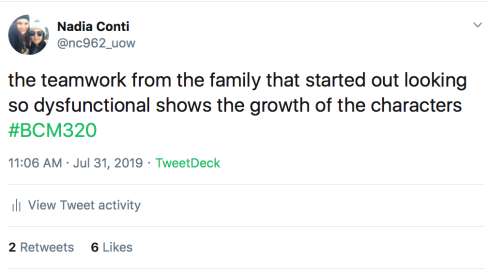
The other stand out theme was the focus on the sister of the main character, an Olympic archer. With this being highlighted during the beginning of the film, it made no sense to me that the other family members would not let her have a weapon against the monster. Within my Italian culture, there are still specific ‘gender roles’ but living in Australia and therefore primarily adopting Australian culture, this made almost no sense to me. In my day to day life and specifically in my part time job, the idea is: whoever is best for the job gets the job. The idea that she wasn’t allowed a weapon was just frustrating. After reflecting on the film content and background I came to realise that in Korean culture it is the men who look after and protect the family. So, where I saw this as unequal, it is really an accurate reflection on that culture which is different to mine.
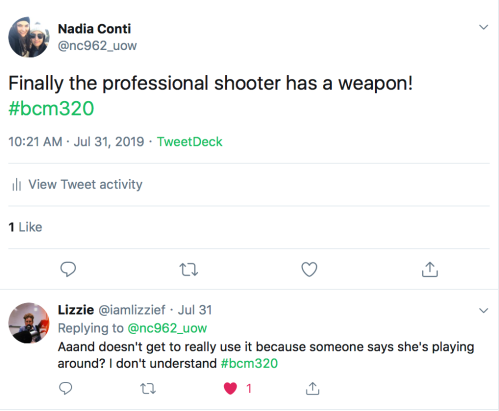
Reference List
Emerson, J. (2007). The Host. Reviews. 1 Aug 2019. https://www.rogerebert.com/reviews/the-host-2007
New On Netflix USA. (2019). The Host (2006) on Netflix USA : New On Netflix USA. 1 Aug 2019. https://usa.newonnetflix.info/info/70059029
#livetweeting Round 2
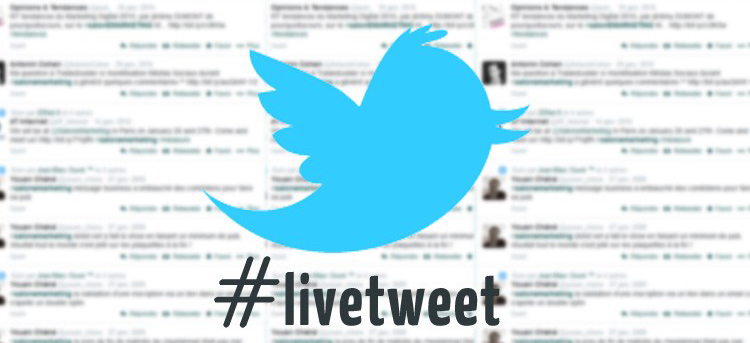
The feedback I received from the last round of tweeting suggested I prepare before the screening and pre-write some tweets. Another suggestion was to find academic sources that are relevant to the weekly screenings. I took this feedback and used it to make the second round of live tweeting a better experience and more successful. I also took techniques that I did well in that last round of tweeting and continued to do it this round.
I found that I was commenting a lot more and had a lot more thoughts on the films this time round. I also was able to respond better to other people’s tweets and engage more in commenting rather than likes and retweets, which I relied on a lot for engagement previously. I think this is a result of pre-writing some tweets as it meant I had more time to engage in other peoples posts and thoughts.
Below are some examples of threads that I was engaged in.
https://twitter.com/abbypoposki/status/1128801110578221056
https://twitter.com/nothandomoyox1/status/1128794810213474304
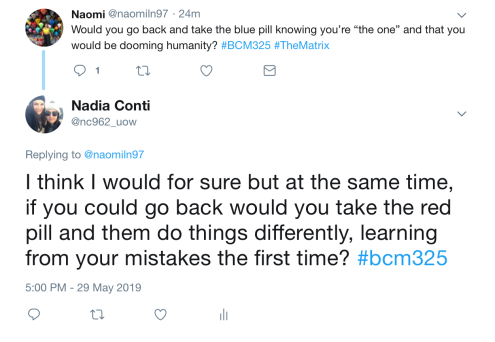
Responding to the feedback, I used this round of tweeting to look into academic sources that relate to the film’s themes. These types of tweets got a fair bit of interactions which surprised me. I struggled to find academic sources in the first couple of screenings but as I began to understand the themes present in the film’s I was able to use draw on those for relevant sources.
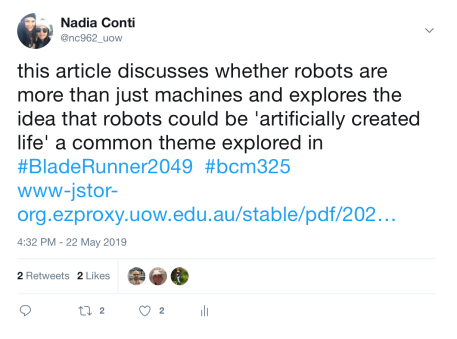
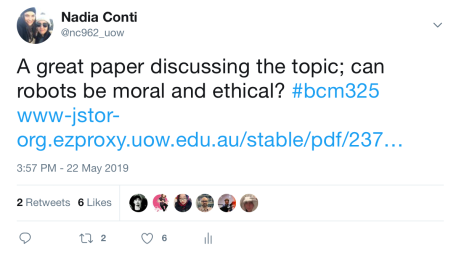
I also tweeted a lot of popular media as I did in the last round of tweeting because these usually got a lot of interactions. Sometimes I found a good article and shared it and it didn’t get a lot of interaction. I would find popular media sources and pre-write these tweets before the screening.
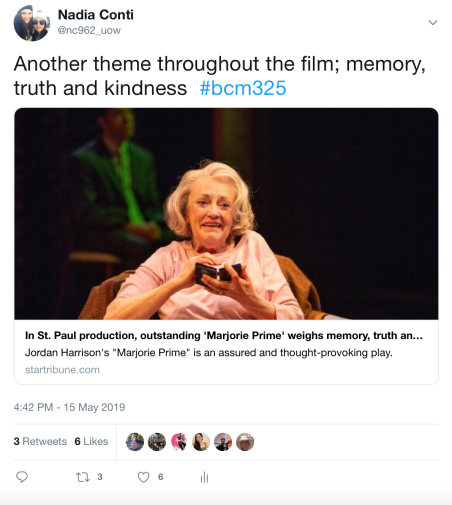
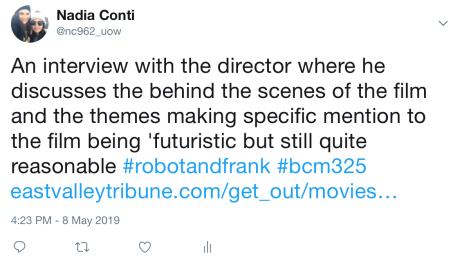
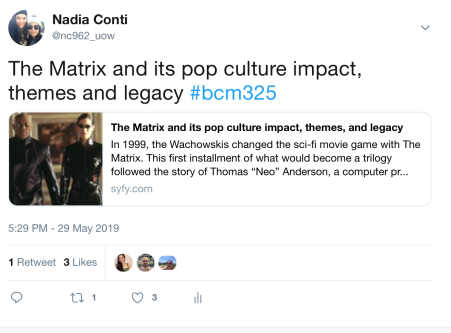
This time I tried to include questions and thoughts on themes in my tweets. Some of these I came up with while doing prior research on the screening and some I wrote during the screening based on content that others were posting and new themes that I would notice in the movie. Some didn’t get the engagement I would have liked, as my intention was to. start conversation, but still drew some response.
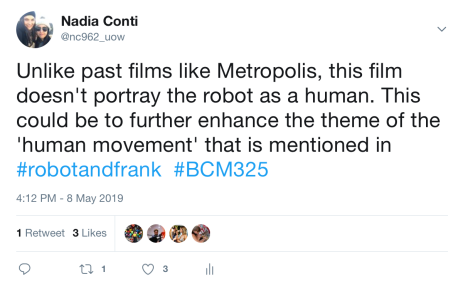
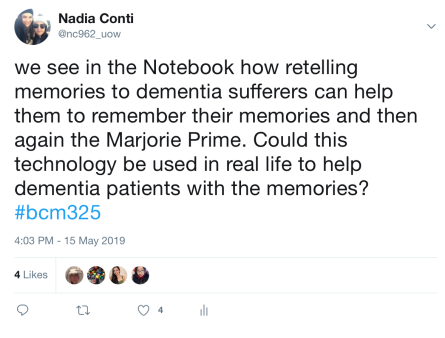
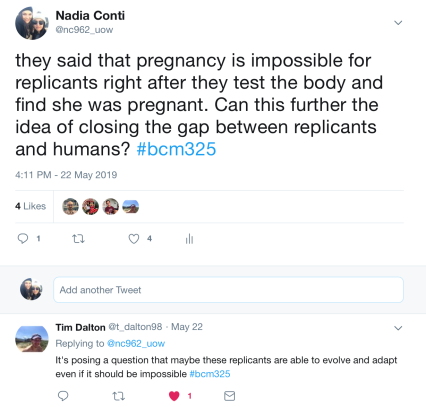
There were a few tweets that didn’t get a lot of interaction. Some of these tweets I was surprised about because they were similar to other tweets that I wrote that did get a lot of interaction. A reason for this could be the wording, especially when tweeting popular media and academic sources. I found it hard to make the tweets for these sources more interesting and attention getting.

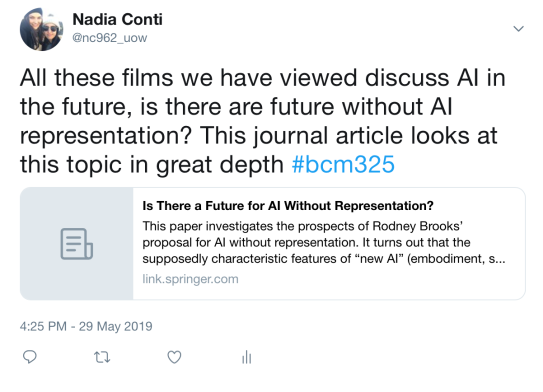
In order to keep up with the films current content I also tweeted GIF’s and memes based on what I thought about events in the films to get interaction. Sometimes these got a fair bit of likes and sometimes they got no interaction at all. I think that in some cases this depended on the timing of the tweets.
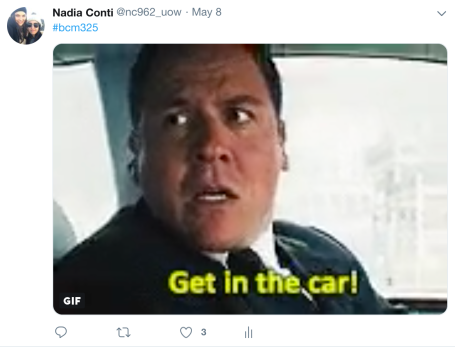
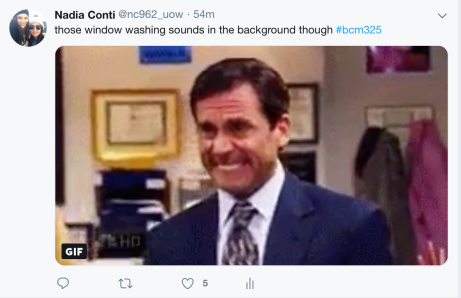
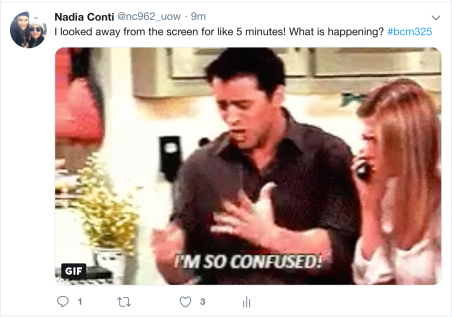
Overall, I think I did a better in this round of tweeting. I interacted more with comments rather than relying on likes and retweets. I found that researching the film and pre writing some tweets was helpful because I was able to spend more time interacting with others and writing about the themes of the film during the screening and posting academic sources and popular media in between. While I improved on commenting more than last time, I still think that I could have interacted more through commenting and will aim to improve in future subjects that require live tweeting. I could also do better with the wording of my tweets to make them more interesting and attention grabbing which I will aim to improve in future subjects.
The Comments Round 2
I approached this round of commenting similar to the last. I followed the same structure of commenting, starting with what I thought was good, followed by suggestions and recommendations that I thought would make their DA’s better and finishing off with links to resources that could help them. Responding to feedback from the last round of commenting, I included links to academic sources in all my comments as well as popular media and news to assist them in further enhancing their research.
Lizzie’s DA looks at past and current celebrity conspiracy theories and then discussing the relevance of these conspiracies in the future. I pointed Lizzie to Subreddits and Reddit in general as a platform to use to generate public feedback, get topic ideas and share her content to her specific audience. Because the podcasts focus on a different topic each week I linked her to popular media sources and Reddit posts with ideas for future podcast episodes because I wasn’t really sure what other information I could link to help her. After I learned what her next podcast topic was I found an academic source that might help with her with information. I found Lizzie’s DA really easy to engage in because the topic is so interesting and the content is relevant and entertaining.
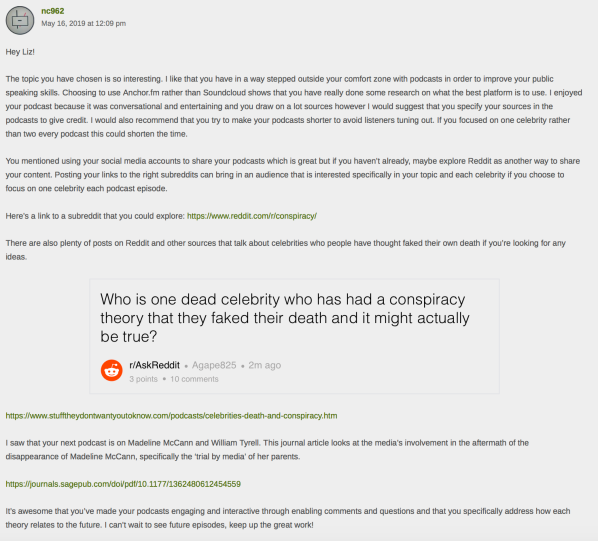
Nicola’s DA uses an Instagram account to look at social robots and how digital influencers can eventually take over social media from other influencers. This was a subject I didn’t know much about so I was interested in her approach to the topic and her method. Nicola had mentioned doing blog posts on her background research so I linked her to popular media sources and an academic journal on her topic to assist her in blog posts. As I was unfamiliar with this topic, I thought about ethical implications of bots as influencers and suggested this could be a topic she could discuss in a future blog post, also linking information on this topic to her.
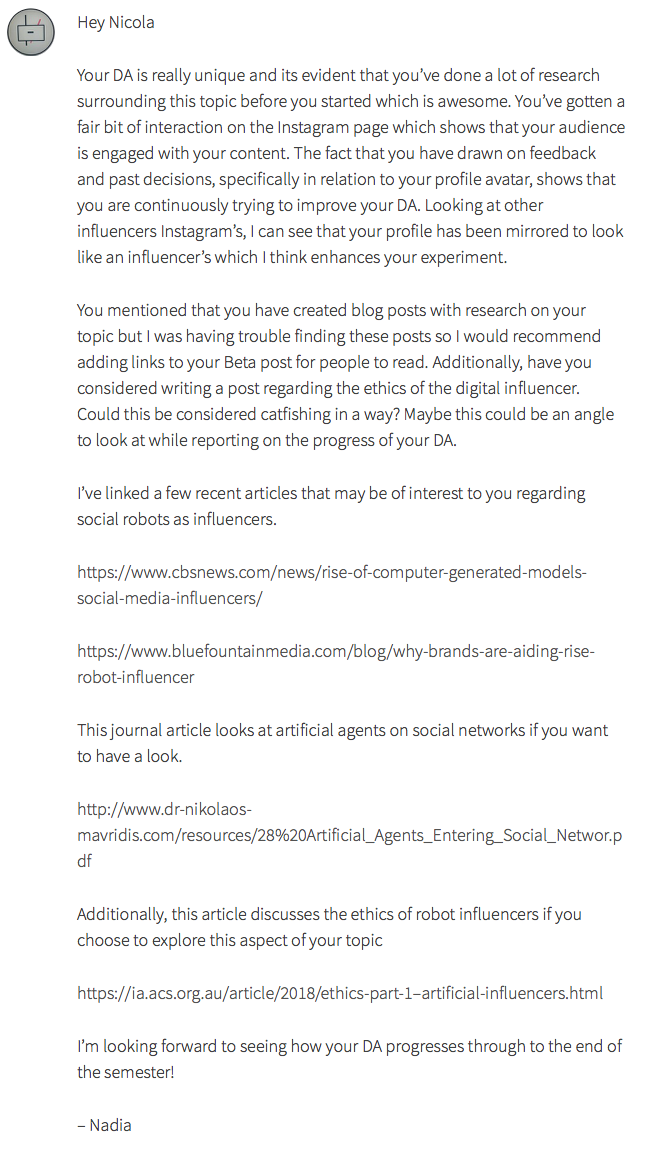
Naomi’s DA discusses the use of insects as a form of food in the long term future. She is presenting her information in a video that will incorporate her previous podcasts and a survey. I was very impressed with the amount of research that Naomi had done for her DA and it seemed that she had finished with secondary research. I ended up linking her to popular media sources that are no more than a few weeks old so if she chooses to add more to her research she has current sources and information. Naomi struggled with getting public feedback so I looked into other platforms that she could use to generate feedback and ended up linking her to Anchor.fm, a platform that I learnt about from another DA.
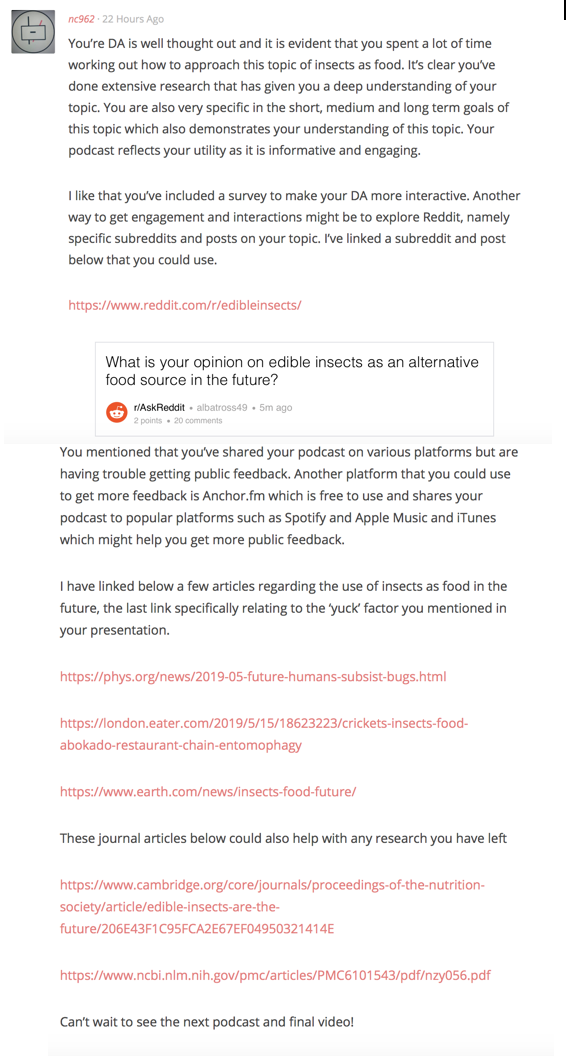
In BCM, commenting on work by other students has always been part of subjects, however this is the first time I’ve had to engage with other digital artefacts and give feedback that I think will help. I tried to include a mix of sources and recommendations for the actual artefact in order to cover a range of aspects of the artefact. Commenting is a skill that I have been able to develop and improve throughout the 2 rounds of commenting. Through this commenting I have been able to consider how I develop and present my own DA and some of my recommendations for others, I have incorporated into my own. This experience has helped me understand the importance of good feedback and I’ll implement this skill in future subjects.
An Update on the Future of Space Travel
The future of space travel is a website that I have started for my BCM325 digital artefact. Taking feedback from Twitter, Reddit and the comments on my pitch, I have developed a website that includes posts on Space travel depicted in movies and my thoughts on common questions about space travel in the future. Coming soon will be podcasts and other blog type posts with more content from fantasy media such as movies and video games and current media on new developments and what this means for space travel in the future.
Always welcoming feedback so feel free to have a look and let me know what you would like to see! https://curiousstudent.wixsite.com/spacetravel
The Comments…
Being able to view and engage with other student’s Digital Artefact pitches really helped me consider my own. Some of the recommendations that I gave others I realised would actually help me a lot with my own DA.
Even though I wasn’t really too keen on commenting, I tried to approach it in a positive way because the whole point was to engage and assist other people and I wanted to give the best feedback I possibly could. I aimed to give some positive feedback about what I thought was good, followed by a recommendation and then some sources that could help them. I mainly stuck to this but not completely. I think my main issue with commenting on other peoples content is that I don’t want them to take offence to anything I say and I don’t want to be overstepping in what I say, especially when giving recommendations. I tried to be really positive and I also found that I kept reiterating that what I said were just suggestions that definitely didn’t need to be followed.
Erin’s DA looks at dream recording as a way to assist with mental health patients. The idea is to use short video essays to explain the technology and how it can be developed to assist psychologists in treating mental health patients.
My main concern with commenting was that I wasn’t going to be able to engage in the content because I wasn’t interested in it or because I genuinely wouldn’t know what was going on but it was actually very easy to engage with Erin’s pitch because she was very straight forward with her idea and its an interesting take on this topic. My go to recommendation in all three comments was to use Reddit which is surprising because I hardly ever use reddit but I found that for their DA’s it would be a good platform to share content and start conversation which could also result in a feedback cycle. In my research on dream recording I found that there was a fair bit on the ethical issues surrounding privacy with the technology so I thought it would be a good topic for Erin to touch on and I linked her to a website that I hope is helpful for her.
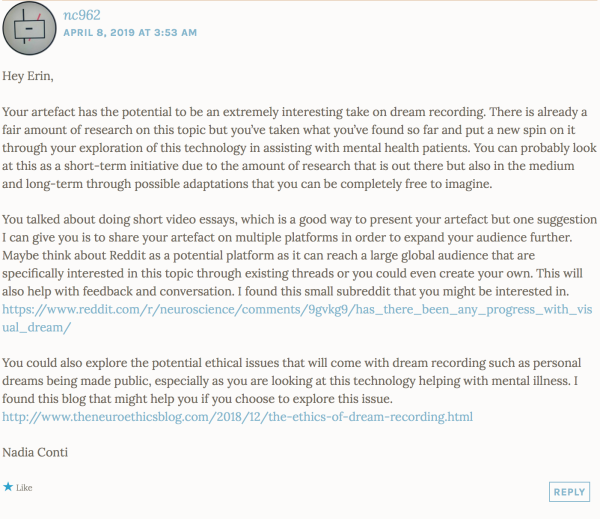
A follow on from a previous DA, Nothando looks at migration, a relevant topic in the present and the future. She plans on conducting interviews with first and second generation migrants to Australia regarding their experience and adaptions into our culture.
I thought it was awesome that she is continuing a previous DA and it is a relevant topic both in the present and definitely in the future. I suggested Nothando look at how migration might change in the future and incorporate this question into her interviews. I was concerned with this comment because I thought that this might be overstepping so I ended up being overly nice about how I said it and reiterated that it was just a suggestion. In researching, I found that there are concerns with overpopulation as a result of migration so I linked a website into my comment that she could have a look at if she chooses to explore the future of migration.
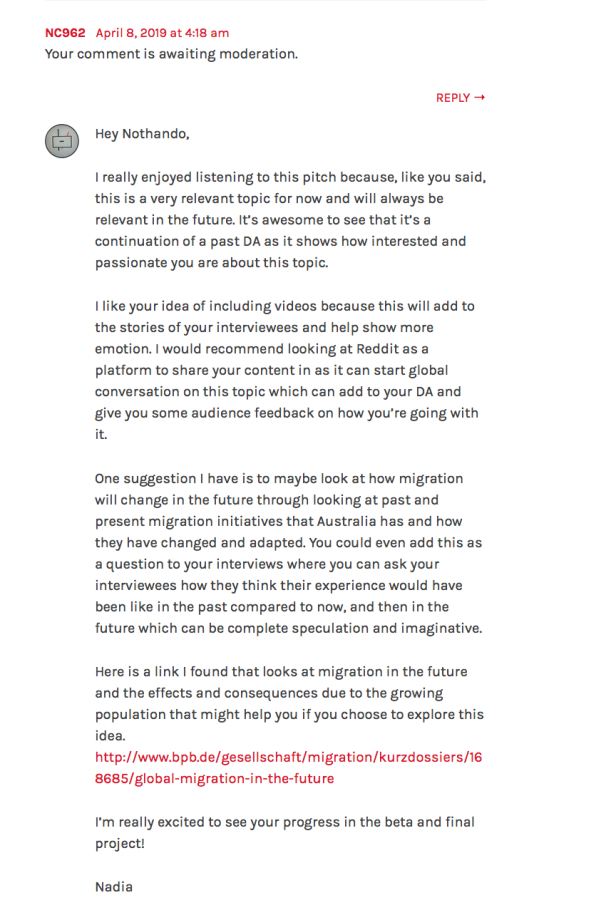
Emily’s DA considers all things future, where her podcasts will have a specific topic regarding future technologies and theories that will be discussed based on current research and opinions and speculation from the view of herself and her guest speakers.
I kind of struggled to engage in this pitch because the idea was so broad. I didn’t really know what research to do that could help her with content which I regret not doing because I think that extra research would have helped her. Once again I looked at Reddit as a platform because I think it could help her find her specific audience for each topic which I think was the most effective part of this comment. I also suggested she have a common theme which I was concerned about saying because, again, I didn’t want to overstep. I wish I would have looked for similar content as examples for her.
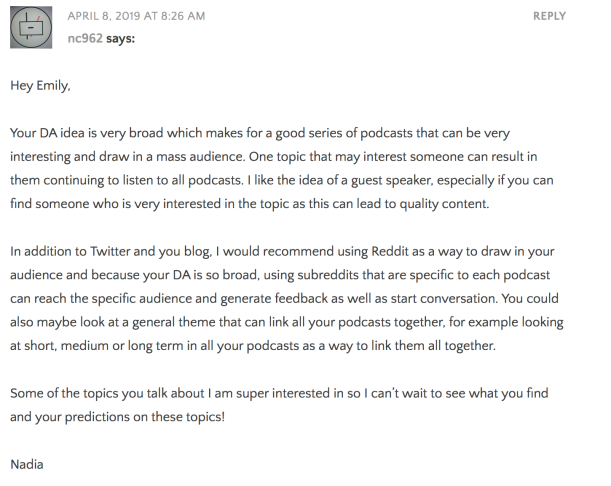
Overall, I think I mostly engaged well in the pitches, however I aim to do more research and link more sources in the next round of commenting to further enhance my ideas and assist them more in their projects.



